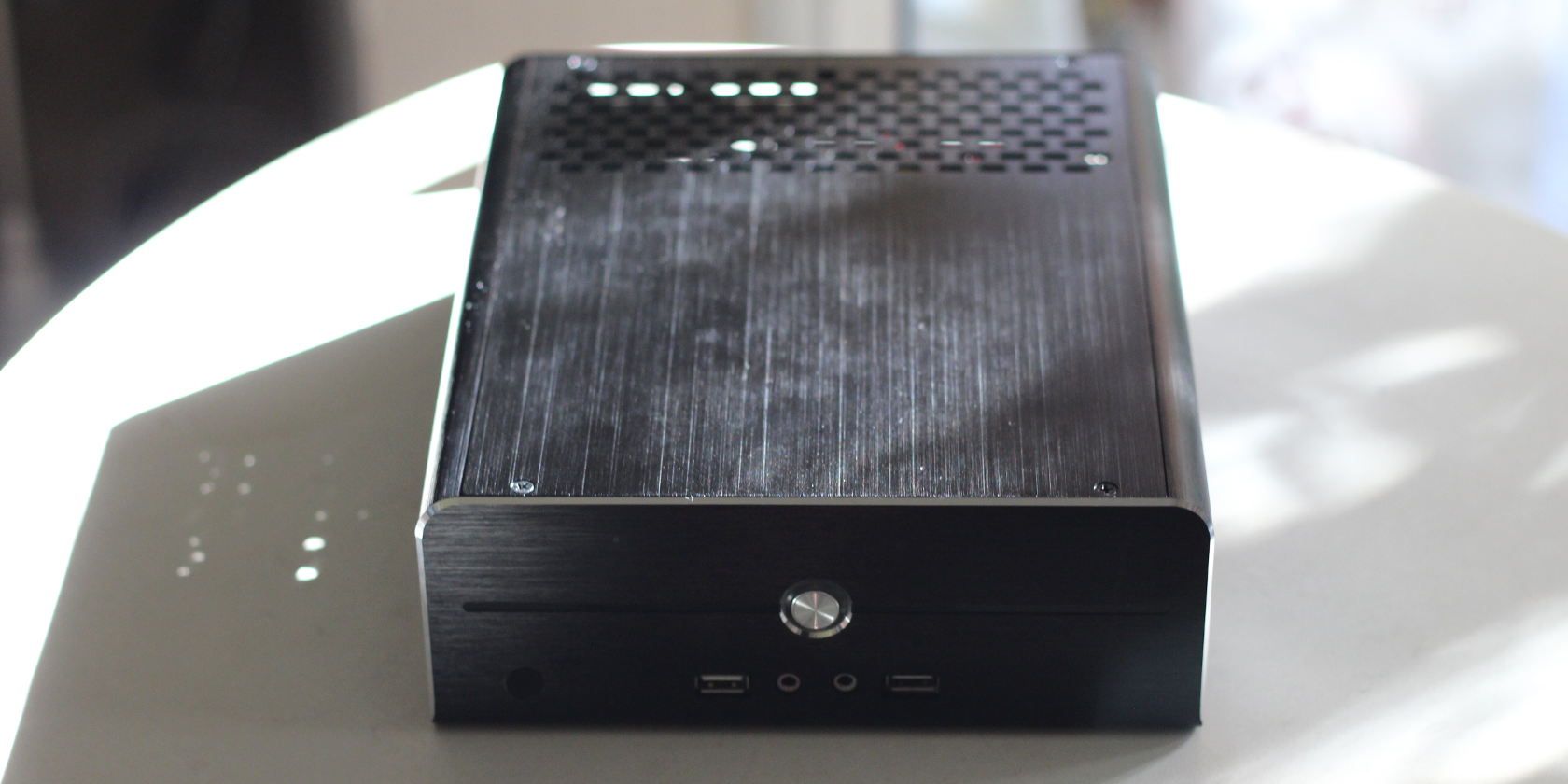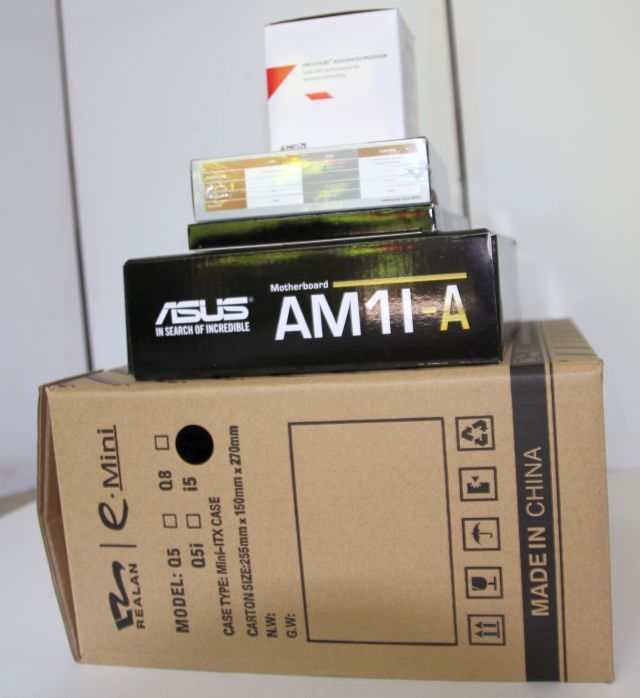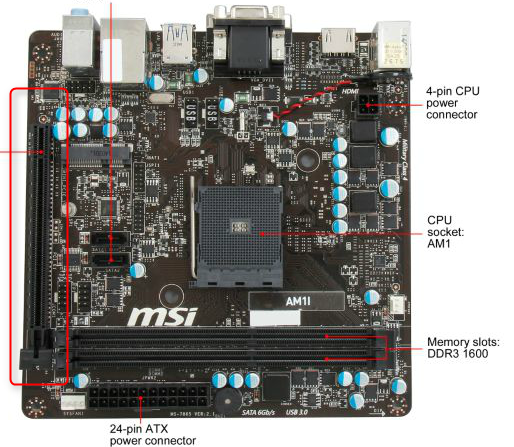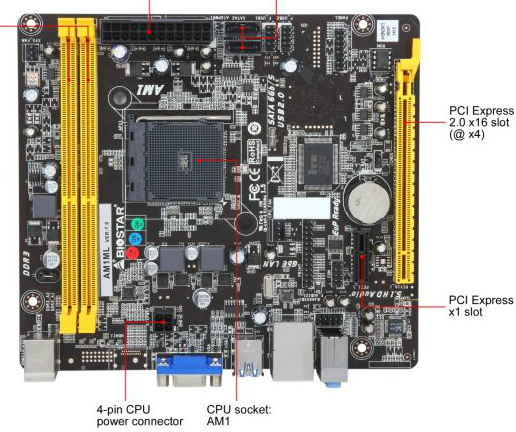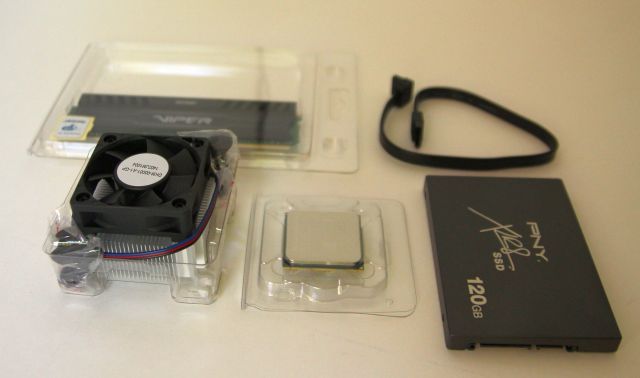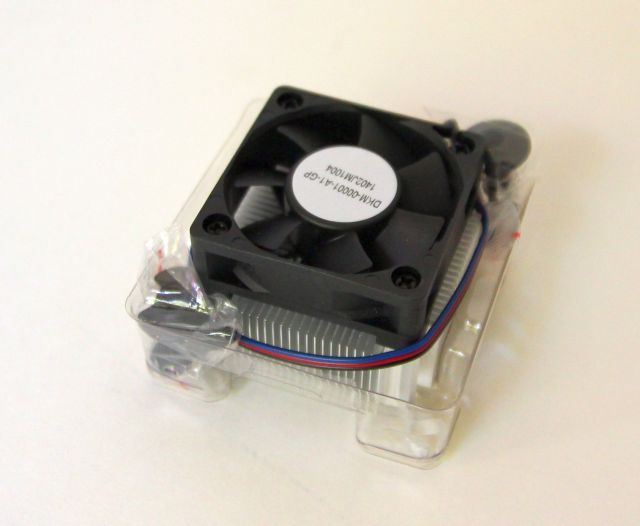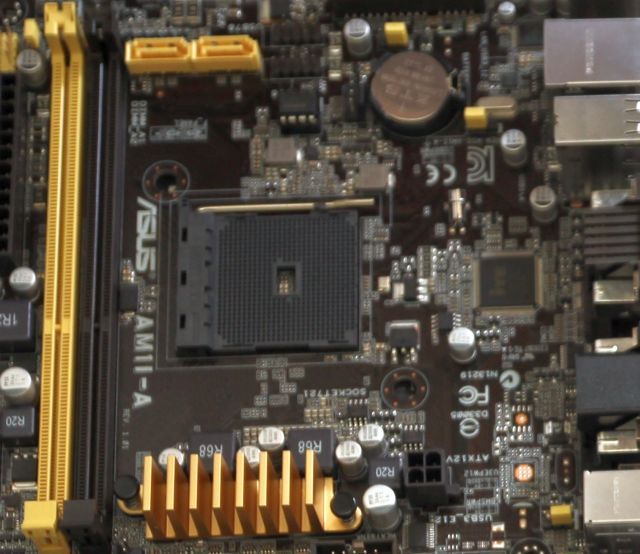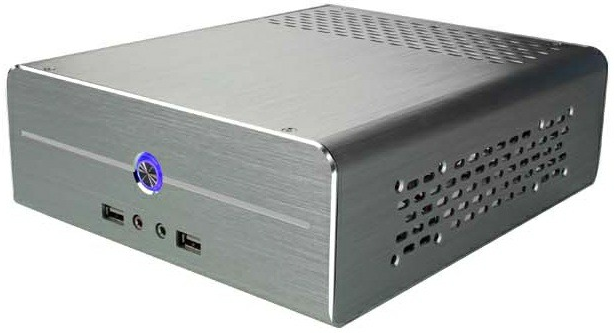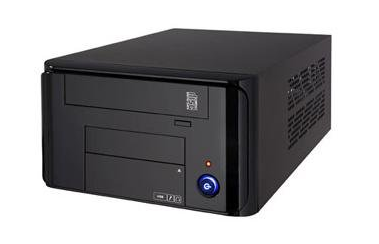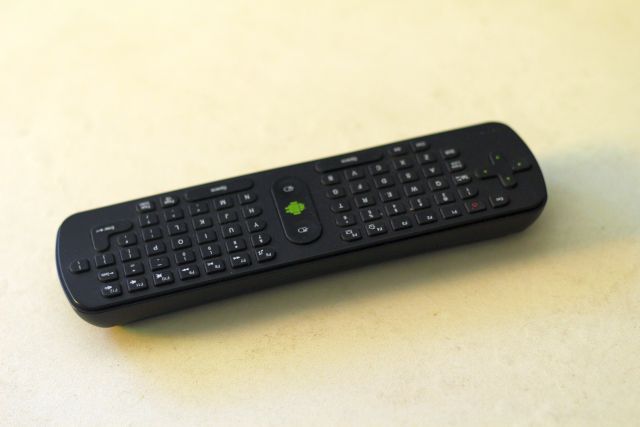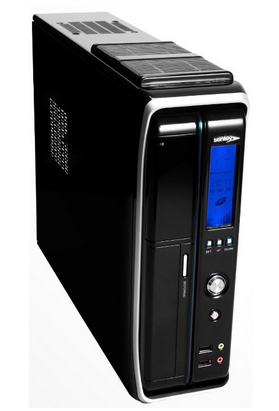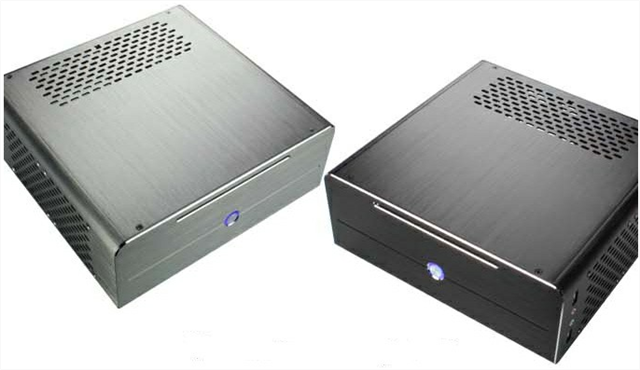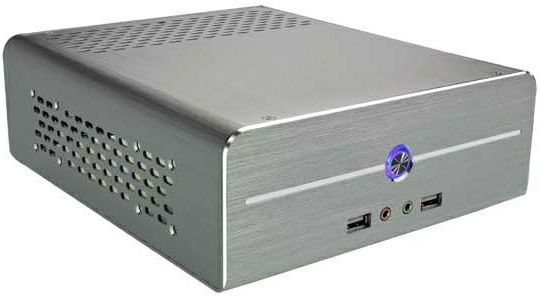I built a low-cost, high efficiency home theater PC with the brand-spanking new AM1 platform, which you can read about here. APU technology take the center within the AM1 platform, providing both a CPU and GPU in one package. AM1 components require less space and need less overhead than conventional processors from Intel and AMD. The lower wattage requirements open the door to picoPSU technology, which allows 96 percent efficient conversion of power from the wall to your computer. Furthermore, the platform offers good performance as a desktop, HTPC or even a light Steam rig, at console resolutions.
However, DIYers need to know the ins-and-outs of the AM1 platform, particularly its integrated graphics (known as an APU). The heart and soul of a modern media center is its ability to push digital content to televisions. The AM1 platform's design pushes more components onto the APU itself, allowing manufacturers to steeply discount motherboards. AM1 boards run as low as $29.99. The system also offers a lower power draw than most budget builds. The average build will require around 30 watts throughout normal operation. Its low costs, moderate performance and power efficiency make it an ideal platform for word processing, media center systems and more.
This article covers the various components, with suggestions, for building an AM1-based media center or office productivity desktop. I also showcase the AM1 platform with three sample builds.
Build Considerations
The AM1 platform specializes in a small, but efficient, number of roles. Keep in mind the following build restrictions: small form factors, limited SATA ports and limited driver availability.
Small Form Factors
AM1 motherboards come in only two sizes: mini-ITX (mITX) and microATX (mATX). From what I can tell, the only difference between a microATX and mini-ITX board is the number of available PCIe slots. mITX boards feature a single PCIe 2.0 x16 (quarter speed) slot, whereas mATX boards offer at least one PCIe and one PCIe 2.0 x16 (quarter speed). A quarter speed PCIe 2.0 port is electrically wired for the x16 form factor, but it functions at a quarter of the speed. For example:
mITX single PCIe 2.0 x16 port (quarter speed):
mATX PCIe + PCIe 2.0 x16 (quarter speed):
SATA Ports
By design, vanilla AM1 socketed motherboards feature only two SATA III ports. This limits the roles that the AM1 platform can fulfill – for example, most media centers only need one or two SATA ports. A file server, on the other hand, might require more drives. For small mITX or mATX cases, this doesn't present much of an issue, as limited availability of space within smaller cases prohibits more than a few drives.
A few motherboards include additional SATA ports, but they use drivers which may not receive Linux support. Therefore, for better Linux compatibility, you should select a motherboard with two SATA ports and no additional frills. Otherwise you might need Windows 8. Reportedly, Windows 7 users experienced issues on certain AM1 motherboards.
Driver Availability
In a nutshell, two kinds of operating systems can install, out-the-box, with few problems: Linux, on the latest kernel (what's going on with Ubuntu 14.04?) and Windows 8 – older versions of Windows require additional drivers to properly install – many board manufacturers don't support AM1. I would advocate Linux builds over others, although AMD's APU Linux driver support tends to lag behind that available for Windows 8 builds. You can expect higher power consumption and heat, as a result. To some extent, users may notice some frame buffering issues when attempting to stream high definition video if using Linux and open source drivers. Fortunately, AMD makes their proprietary drivers available for download (see below).
- Linux/Ubuntu: For full HD playback, you should install the Catalyst Control Center, which AMD makes available through the Ubuntu Software Center. You can also download the drivers directly from AMD. I do not suggest installing the open source drivers, as they do not run as cleanly as AMD's proprietary drivers. On the other hand, the open source drivers consume less wattage according to reports from the field. You may also need to edit configuration file in order to get full HD audio in HDMI. It wasn't a lot of work, but you may otherwise experience audio quality issues.
- Windows 8: With Windows 8, playback and performance will feel seamless and you won't even need to install additional drivers. I do suggest downloading AMD's Catalyst Control Center, though as it will improve performance. Additionally, Windows 8's power management drivers will improve your power consumption by several watts – and your system will run cooler, as a result.
The Components
Building an AM1 platform-based PC requires a basic understanding of assembling a computer. We've written about building your own PC. This section covers the peculiarities of building on the AM1 platform and the individual components that you will need.
APU and RAM Options
As of May 2014, six AM1 APUs exist. What's an APU, you ask? APUs combine a graphics processor (GPU) with a central processing unit (CPU). There's synergy in this pairing: APUs require less power than stand-alone "discrete" GPUs. They also require less case space. Unlike discrete GPUs, which include soldered on memory, APUs designate a variable portion of system memory, or RAM, to the APU. Users can configure their APUs to use between 512MB of RAM to 2GB. APUs can produce better performance in many games with faster RAM.
RAM Speed and Dual Channel: Unfortunately, AM1 technology doesn't support dual-channel memory. This limits bandwidth, but overall doesn't cause much of a reduction in performance. AM1 technology at present also maxes out at DDR3 1600MHz speeds. With these factors in consideration, you can build a solid performing AM1 system using a single stick of 4GB memory (thanks to MUO user Howard for the correction).
Socketed APUs: The AM1 APUs also come "socketed", meaning you can swap the APU for another when upgrades release. Right now, the Athlon 5350 sits at the top of the APU hierarchy, but over time AMD will likely cycle through AM1+, followed by AM2. Given AMD's prior history, AM1+ APUs will work in AM1 sockets. They will not work in AM2 sockets – so users should receive an upgrade option in 2015. All APUs use 25 watts.
- Athlon 5350 @ 2.0GHz: The 5350 comes with the Radeon HD8400 integrated GPU, also known as the Radeon R3 — $64.29 via Amazon
- Athlon 5150 @ 1.6GHz: The 5150 also comes with the Radeon HD8400 (R3) — $51.99 via MacMall
- Sempron 2650 @ 1.45GHz: The 2650 comes with the Radeon 8240. Unlike its siblings, the 2650 only offers dual-core support -- $31 via Amazon
- Sempron 3850 @ 1.3GHz: The 3850 comes with the Radeon 8280. It's a quad core — $36 via Amazon
Motherboard Options
AM1 motherboards come in two form factors: mini-ITX or micro-ATX. The smaller of the two, mini-ITX (mITX), differs in having only a single PCIe slot, whereas mirco-ATX (mATX) boards offer two – one slow and the other fast. To my knowledge, around a dozen AM1 boards exist, ranging in price from $30 to around $60. The boards differentiate from one another by adding features, such as parallel ports, mini-PCIe ports, additional SATA ports and more – however, users will experience driver compatibility issues when attempting to install Linux on boards with extra features.
Here's a few additional boards, along with added capabilities:
- ASRock AM1B-ITX mini-ITX: Serial port — $39.99 via Newegg
- ASRock AM1H-ITX mini-ITX: DC-In — $58.99 via Newegg
- MSI AM1I mini-ITX: mini-PCIe (potential Linux issues) — $35.99 via Newegg
- Gigabyte GA-AM1M-S2H microATX: PCIe 2.0 x16 slot — $39.99 via Newegg
- ASUS AM1I-A mini-ITX: Undervolting, overclocking, good Linux compatibility — $47.09 via NextWarehouse
- Biostar AM1ML microATX: PCIe 2.0 x16 slot — $32.99 via Newegg
Regarding mATX boards, I feel that the PCIe 2.0 x16 slot offers little, since using a discrete graphics card shuts off the integrated graphics. Unless there's a special reason, most builds receive better value from assembling using mITX, despite the slightly higher board cost. Overall, mITX boards fit in smaller cases and require less cable length to make connections.
Case Options
Before buying the case, make sure its height can accomadate the 65mm internal fan. Two cases, which also offer integrated picoPSUs, are the Realan E-i5 and the Realan E-i7. The E-i5 also includes room for two 2.5" drives whereas the E-i7 can fit a slim DVD drive. I recommend the 60-watt power supply option, if you use a solid state drive. For those on mechanical drives, you may need to upgrade the power supply. Hard drives can use around 25 watts of power on boot, depending on its design.
mITX cases:
- Antec ISK110-VESA (90-watt picoPSU power supply) — $74.72 via Amazon
- Antec ISK-300-150 (150-watt power supply) — $79.99 via Amazon
- Realan E-i5 (60-watt picoPSU power supply, upgradeable to 120-watt) — $99.99 via EcoSmartPC
- Realan E-i7 (84-watt picoPSU power supply, upgradeable to 120-watt) — $119.99 via EcoSmartPC
mATX cases:
- Rosewill case (300-watt power supply) — $49.99 via Amazon
- Sentey case (250-watt power supply) — $39.99 via Amazon [Broken URL Removed]
- Apex MI-008 case (250-watt power supply) — $49.24 via Amazon
Power Supply
If you don't want to use an integrated power supply, you can purchase one that matches the dimensions of your case. Case manufacturers will state the form factor, or physical dimensions, required by the case. Small form factor cases will use either picoPSU, TFX, SFX or "microATX" power supplies (there actually isn't a form factor known as microATX, for power supplies). I should note that both TFX and SFX power supplies generally use smaller fans, which rotate as faster speeds, causing additional noise. The best unit, in terms of price, remains the picoPSU. Remember the following rules for picoPSUs: They use limited, and varying, kinds of connectors. If a picoPSU doesn't have the required connectors, you will need to purchase a splitter or adapter.
Optional Components
Air Mice: I highly recommend getting a media center remote control — my favorite: an Air Mouse. It allows control over your mouse through accelerometers. Movement from the hand holding the remote also moves the on-screen cursor. Also, you might want to consider a USB or PCIe wireless card. However, keep in mind that low-profile cases will require low-profile PCIe cards.
Infrared Remote: IR remotes use the infrared spectrum to send commands to your television. They require an IR receiver, which can either integrate into a compatible case or work from a USB dongle. IR remotes sometimes offer "universal" compatibility, meaning they can control a television set and your HTPC. They also don't suffer from the same bandwidth limitations as WiFi-operated remotes. On the downside, they don't feel nearly as good as an Air Mouse.
Dual-band WiFi Adapter: If your machine principally streams video content, check to see if your wireless router offers dual-band support. What's a dual-band wireless router? In short, it helps stream content at faster speeds, with far less interference.
Building Tips with the AM1 Platform
First, make sure you've read up on how to build a computer.
I won't go into the minutiae of PC building. The build process for the AM1 platform doesn't differ in any major respect from others. Aside from a departure from AMD's CPU clamp, putting an AM1 PC together requires no special knowledge. I'll briefly explain the major departure.
The AM1 socket (which is a rebranded FS1b socket) has more in common with Intel's LGA1150 socket than AMD's. It uses two spring-loaded push-pins. Essentially, you clip the heatsink-fan combo onto two plastic guide-posts. Then you position the heat sink/fan combination over the CPU socket, lining up the guide posts with the holes on the motherboard.
The spring-loaded, plastic guide posts require a little bit of force to insert into the holes on the heat sink. Make sure you've aligned the handles of the guide posts with the heat sink as they won't fit through the holes on the motherboard. Then push the guide posts through the holes on the motherboard, surrounding the APU socket. Once they are pushed all the way through, insert the longer pins through the center of the guide posts, which will lock the heat sink into place. There's two of these, so make sure you do one at a time.
BIO/UEFI Configuration
You won't need to do much in the BIOS/UEFI (referred to as UEFI). Simply load the optimized default, set a RAM profile and then designated the amount of RAM you want to use as a complement to your APU. Then save and exit. You may end up needing to configure the CMS settings (for compatibility purposes), to "Other OS" rather than "Windows 8", if you are doing a Linux build.
Three Sample Builds
I put together three sample builds for those wanting to build one of three stereotypical models: A ultra low-cost Linux streaming HTPC, a "deluxe" Linux HTPC and an eco-friendly Windows 8 streaming HTPC, desktop and light Steam Box.
Ultra Low-Cost Linux Streaming HTPC
- APU: AMD Sempron 2650 — $31 via Amazon
- Motherboard: Biostar AM1ML mATX —$35.99 via MacMall
- Power supply + case: Sentey mATX with power supply —$39.99 via Amazon
- RAM: ADATA XPG V1.0 1600MHz 4GB — $34.99 via Tiger Direct
- Hard drive: ADATA Premiere Pro SP600 SSD — $36.99 via Amazon
- Operating system: Ubuntu 14.04 LTS — $0.00 via Ubuntu
- Total cost: $178.96
This particular model leverages the low build costs of the AM1 platform and the dual core Sempron 2650 APU. However, for just a few dollars more, builders can swap in the quad core Sempron 3850, with a higher rated integrated GPU (which I suggest doing). While it's not as energy efficient as its brethren, because of its actively cooled power supply, it still offers very low power consumption.
Deluxe Linux mini-ITX HTPC
- APU: AMD Athlon 5350 — $59.84 via SuperBiiz
- Motherboard: ASRock AM1B-ITX mini-ITX — $39.99 via Newegg
- Power supply + case: Realan E-i7 with 84 watt picoPSU — $119.99 via EcoSmartPC
- RAM: ADATA XPG V1.0 4GB 1600MHz RAM — $34.99 via Tiger Direct
- Hard drive: 120GB PNY XLR8 SSD — $59.99 via Newegg
- Remote control: Air Mouse — $19.99 via Amazon
- Wireless device: TP-LINK 802.11b/g/n 2.4/5.0GHz — $21.99 via Amazon
- DVD drive: Slim DVD — LiteOn $21.99 via Newegg
- Operating system: Ubuntu 14.04 LTS — Free via Ubuntu
- Total cost: $378.78
Even though I refer to this example as a "deluxe" model, in truth, it's decidedly a low budget build. I also included an Air Mouse, which work great as media center mice/keyboards, a USB dual-band wireless adapter and a slim DVD drive for use with the slightly larger Realan E-i7 HTPC case, which includes a slim DVD slot.
While the total cost hovers around $400, you get aesthetic quality, wattage efficiency and portability. I specifically left Blu-Ray compatibility out as it adds a ridiculous amount of overhead. But it should do pretty much everything required of a media center, including DVD playback, game emulation and light Steam or Desura gaming.
Eco-Friendly Windows 8 HTPC Build
- APU: Athlon 5350 — $59.84 via SuperBiiz
- Motherboard: ASUS AM1I-A — $47.09 via NextWarehouse
- Power supply + case: Realan E-i5 — $99.99 via EcoSmartPC
- RAM: ADATA XPG V1.0 1600MHz 4GB — $34.99 via Tiger Direct
- Hard drive: PNY XLR8 SSD 120GB — $59.99 via Newegg
- Operating system: Windows 8.1 OEM — $99.99 via Newegg
- Total cost: $401.89
This particular build goes for the lowest possible wattage. It uses a solid state drive (what's an SSD?) and Windows 8, as Windows 8's drivers incur less drain than the Linux drivers. The ASUS board allows undervolting – referred to as "Voltage Offset" in the ASUS board's UEFI/BIOS. It also uses a 96 percent efficient power supply. It should use somewhere between 15 and 25 watts.
Considering this is a lower wattage build, you could consider using low-voltage RAM. However, low voltage RAM doesn't actually save much in total wattage. And it could potentially cause an issue combined with an AM1 motherboard, which reportedly suffers from finicky RAM compatibility.
Conclusion
In my build, the AM1 platform offers the right combination of Linux compatibility, power efficiency and affordability. With Ubuntu 14.04 LTS, you can also build a great HTPC for less than $200. I wouldn't recommend spending more than $300 (or $400 if you go for a Windows license), but for anyone wanting either an Ubuntu media center or productivity oriented desktop, consider building with the AM1 platform.

